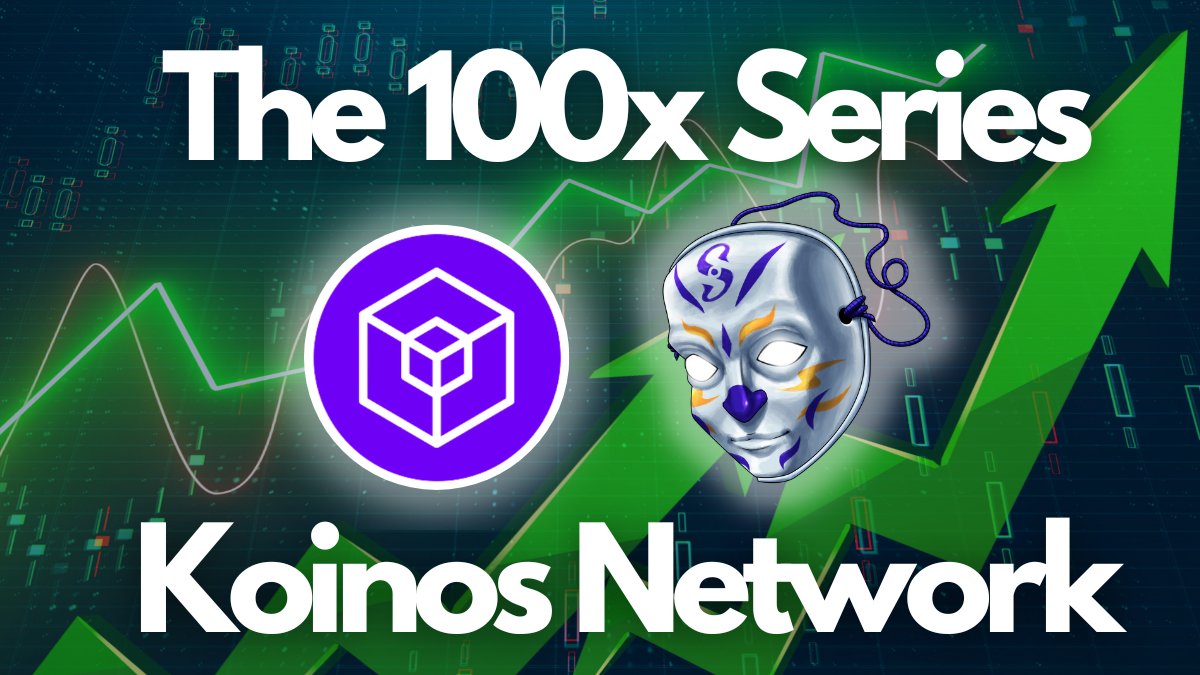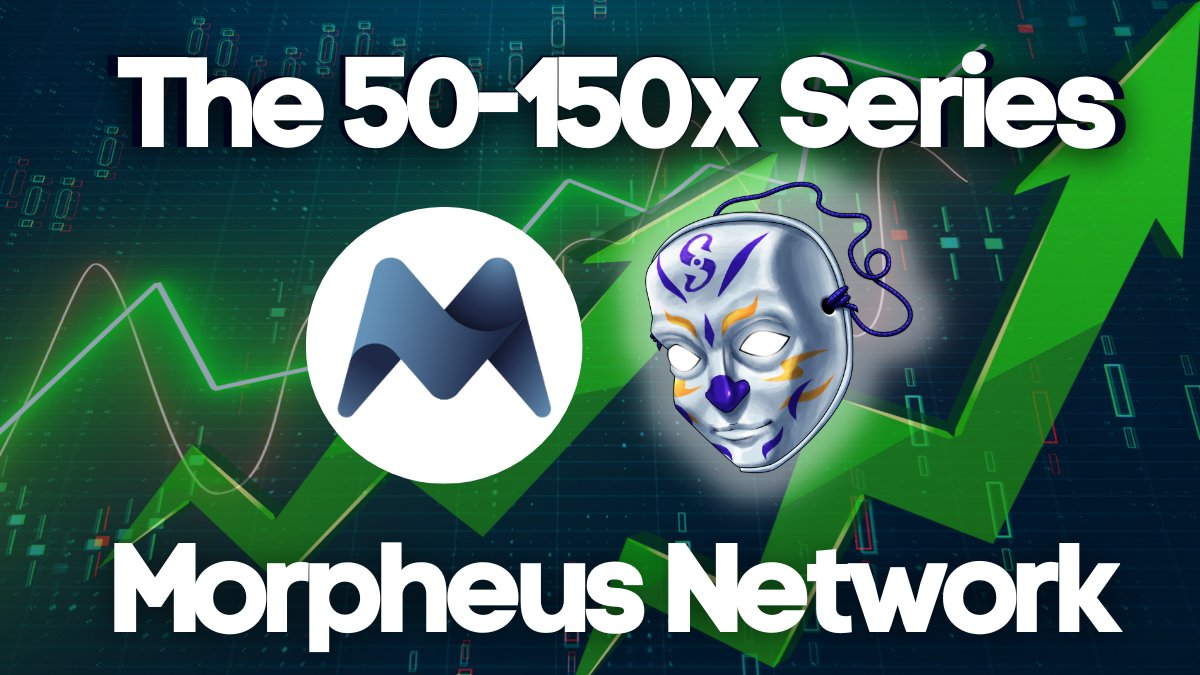
This is honestly one of the most intriguing #Utility projects I've come across.
- @koinosnetwork $KOIN
Crypto Mass Adoption
Only $10m Market Cap
Huge 500x potential
The best thing? It hasn't pumped yet.
This one really could print millionaires 👇
- @koinosnetwork $KOIN
Crypto Mass Adoption
Only $10m Market Cap
Huge 500x potential
The best thing? It hasn't pumped yet.
This one really could print millionaires 👇

Intro:
$KOIN is a gasless blockchain that incorporates a unique consensus method called "Proof of Burn".
This creates a free-to-use & truly decentralised blockchain that maximises accessibility to end-users, developers, and node operators.
Allowing mass adoption.
$KOIN is a gasless blockchain that incorporates a unique consensus method called "Proof of Burn".
This creates a free-to-use & truly decentralised blockchain that maximises accessibility to end-users, developers, and node operators.
Allowing mass adoption.
The Problem:
For blockchain tech to go mainstream it has to be economically viable for businesses to use.
We've all experienced it. Trying to use Ethereum under a heavy load & it's charging you $500 for gas.
That is simply not possible for a regular business to use.
For blockchain tech to go mainstream it has to be economically viable for businesses to use.
We've all experienced it. Trying to use Ethereum under a heavy load & it's charging you $500 for gas.
That is simply not possible for a regular business to use.
If a business was facilitating 10,000 transactions a day, even using the cheapest chains would quickly become uneconomical & unusable.
A true, fully functional and sustainable gas-less blockchain is needed.
$KOIN believe they have found the answer.
A true, fully functional and sustainable gas-less blockchain is needed.
$KOIN believe they have found the answer.
So how does it work?
As mentioned earlier, $KOIN uses a unique consensus method called "Proof of burn".
Proof of burn incorporates parts of both Proof of work & Proof of stake, to create what $KOIN believe is the most decentralised blockchain.
As mentioned earlier, $KOIN uses a unique consensus method called "Proof of burn".
Proof of burn incorporates parts of both Proof of work & Proof of stake, to create what $KOIN believe is the most decentralised blockchain.
This process works in two parts.
Firstly, each $KOIN token has a second part to it, called "MANA".
For every 1 $KOIN there is 1 MANA.
But, to be clear, MANA is not a tradable token nor does it have any value. It is only available through $KOIN.
Firstly, each $KOIN token has a second part to it, called "MANA".
For every 1 $KOIN there is 1 MANA.
But, to be clear, MANA is not a tradable token nor does it have any value. It is only available through $KOIN.
You can think of MANA as the fuel of the network.
For a transaction to be processed MANA must be available.
This means to develop on @koinosnetwork you either need to hold $KOIN(& MANA), or lease $KOIN.
This makes the $KOIN token fundamental to the running of the chain.
For a transaction to be processed MANA must be available.
This means to develop on @koinosnetwork you either need to hold $KOIN(& MANA), or lease $KOIN.
This makes the $KOIN token fundamental to the running of the chain.
Secondly, to validate these transactions into a block $KOIN must be burned.
Here's how Proof of Burn works:
1. $KOIN is burned
2. When $KOIN is burned the node operator receives what's called VHP(Virtual Hashing Power)
3. VHP is basically a digital version of mining equipment.
Here's how Proof of Burn works:
1. $KOIN is burned
2. When $KOIN is burned the node operator receives what's called VHP(Virtual Hashing Power)
3. VHP is basically a digital version of mining equipment.
4. VHP is then used as the power source to validate transactions into a block.
5. Node operators/validators then receive $KOIN for their efforts.
To be clear, the new amount of $KOIN received is greater than the amount burned.
I've added the docs that explain this at the end.
5. Node operators/validators then receive $KOIN for their efforts.
To be clear, the new amount of $KOIN received is greater than the amount burned.
I've added the docs that explain this at the end.
If $KOIN is constantly being burned, won't it run out?
To make being a validator on the $KOIN network attractive, there will always need to be a net positive amount of $KOIN.
To facilitate this, $KOIN is inflated at about 2%.
To make being a validator on the $KOIN network attractive, there will always need to be a net positive amount of $KOIN.
To facilitate this, $KOIN is inflated at about 2%.
However, when the network is under heavy load & competition for mining blocks is high, $KOIN will experience deflation.
Heavy load = lots of burning = deflationary pressure on the token supply, creating positive pressure on the price of $KOIN.
A busy network is good for all.
Heavy load = lots of burning = deflationary pressure on the token supply, creating positive pressure on the price of $KOIN.
A busy network is good for all.
$KOIN isn't just going for User mass adoption.
They're also creating a clear path for developers to mass adopt #Crypto.
Currently, if a developer wants to build on Ethereum they HAVE to use the Solidity language.
But most developers can't put in the time to learn.
They're also creating a clear path for developers to mass adopt #Crypto.
Currently, if a developer wants to build on Ethereum they HAVE to use the Solidity language.
But most developers can't put in the time to learn.
They have a family to feed & cannot sacrifice months of learning a new programming language.
To understand this, Imagine there was a great new job but you had to know Russian fluently to take it.
For 99% of people, this wouldn't be a viable option.
To understand this, Imagine there was a great new job but you had to know Russian fluently to take it.
For 99% of people, this wouldn't be a viable option.
To remove this barrier, $KOIN can be built on with traditional languages.
Currently, the chain supports...
- C++
- Typescript
+ More coming
This is absolutely massive.
Completely removing the barrier of entry for developers and opening the floodgates of creation on $KOIN.
Currently, the chain supports...
- C++
- Typescript
+ More coming
This is absolutely massive.
Completely removing the barrier of entry for developers and opening the floodgates of creation on $KOIN.
That isn't everything massively #bullish about this project.
$KOIN has been designed to be modularly upgradeable.
What does this mean?
The entire network is based on smart contracts, which means it can be upgraded fast.
No hard forks will ever be needed.
$KOIN has been designed to be modularly upgradeable.
What does this mean?
The entire network is based on smart contracts, which means it can be upgraded fast.
No hard forks will ever be needed.
This works very similarly to a hard fork, it just doesn't actually have to go through one.
1.Changes are proposed
2.Validators vote
3.If yes, changes are executed on the smart contracts
This makes $KOIN the only free to use, language-agnostic, evolving blockchain in the world.
1.Changes are proposed
2.Validators vote
3.If yes, changes are executed on the smart contracts
This makes $KOIN the only free to use, language-agnostic, evolving blockchain in the world.
Tokenomics:
This is a very simple one.
- All tokens were minted at launch other than the steady increase of 2% for burning
- The founders hold no tokens
So how do the founders make money?...
This is a very simple one.
- All tokens were minted at launch other than the steady increase of 2% for burning
- The founders hold no tokens
So how do the founders make money?...
The founders are building another project that will support other businesses building on $KOIN.
Similar to what @infura_io is to Ethereum.
This is very #bullish for 2 reasons:
1. The team are invested in helping people succeed building on $KOIN.
2.They will never dump tokens
Similar to what @infura_io is to Ethereum.
This is very #bullish for 2 reasons:
1. The team are invested in helping people succeed building on $KOIN.
2.They will never dump tokens
Annnnnd That's a wrap, guys!
If you enjoyed this thread:
1. Follow me @Sykodelic_ for more of these
2. RT the first tweet to share this thread with your audience
If you enjoyed this thread:
1. Follow me @Sykodelic_ for more of these
2. RT the first tweet to share this thread with your audience
Also, If you like this tweet, you will love my exclusive newsletter.
- The latest Utility-backed Crypto news
- First access to brand-new project reviews
- Education on investing
- Applying the Utility mindset for success
And more
Join here now: theutilitystandard.com/newsletter
- The latest Utility-backed Crypto news
- First access to brand-new project reviews
- Education on investing
- Applying the Utility mindset for success
And more
Join here now: theutilitystandard.com/newsletter
• • •
Missing some Tweet in this thread? You can try to
force a refresh












